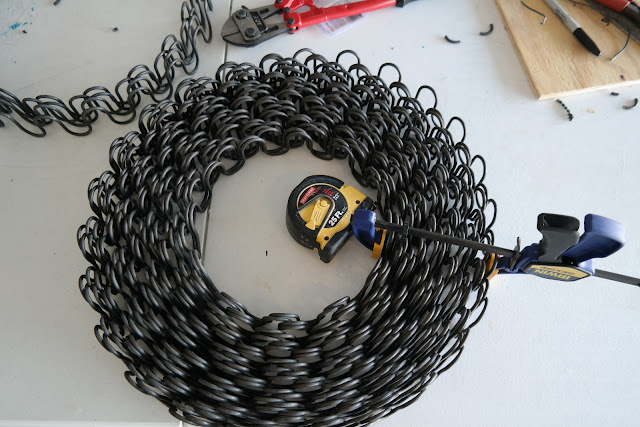I've been busy lately making slipcovers and curtains plus working on the new over sized chair for the living room. I wanted alot of throw pillows for the furniture pieces and found these down and goose feather pillow forms. I love them. I bought them off Amazon for roughly $15/piece. I also went out to Fabric.com and found some contrasting french country fabrics.
I made about 8 pillows covers. They have a zipper so that I can change them up whenever I get sick of the fabric or simple want a change of pace.
The best thing I ever bought was this piping foot. I spent $10.00 and it has made a world of difference. I've made a lot of piping lately with the slip covers and with my new foot, they always turn out beautifully.
You can find the foot here. My Brother machine requires a high shank, so I purchased accordingly.
The side view of the piping foot. It has the groove where the piping fits as you sew along.
So, let's start with the how to make the piping. This picture is the piping I made for a slipcover, but I did the same for the pillow covers. Cut some strips 1 and 5/8th inch wide and cut enough to go around the pillow.
Sew the binding strips together using this method. With right sides together, sew diagonally.
Then cut off the little triangles so it looks like this.
Using the piping (or welting), fold the fabric over the piping.
You can also use your zipper foot to make your piping.
Measure your pillow and cut the top fabric the same dimensions. Once you sew everything together, it'll be about an half inch smaller than your pillow, which will make the pillow nice and full.
Now for the back.... Add another 1 1/2 inch to the width to allow for the zipper. Fold it in half and cut it so you have two equal size pieces.. Fold down one side about 1/2 inch and iron it. Fold the other side about an inch and iron down.
Choose a zipper that is roughly the same width and color as your fabric. Using your zipper foot sew down the 1/2 side. Then butt the one inch side together so it covers the zipper and sew down the other side.
I usually take both top and bottom and put them together and make sure they are exactly the same dimensions. Make some adjustments if not. Then I sew the piping around the outer edge of the top piece. Make little cuts in the corners of either the piping or fabric pieces to relieve any tension while making your turn. When you get to the end, cut some of the piping and folder over the fabric.
Slip the one side of the piping down inside the folder over fabric like this.
With right sides together, sew the top and bottom pieces together. Tip: make certain the zipper is open before sewing completely closed. It's a real pain to try and open the zipper after it's been sewn together.
Cut the corners to take out the bulk when you turn it right side out.
Turn right side out and put your pillow inside.
Giving the pillow the extra wide lip really hides the zipper.
You can barely see it and the extra wide lip keeps the zipper from snagging or catching on other items.
I bought the pillows for about $15.00 each at Amazon.
You can find the pillows here, made in the USA. You can find some really great fabrics for around $10.00 a yard, so for $25.00 you can have some high quality throw pillows. I saw the same high quality pillows at Pottery Barn for $50.00 and they didn't have the zipper. I really love the down/feather versus a form insert too. Definitely worth the buy and effort.
















































